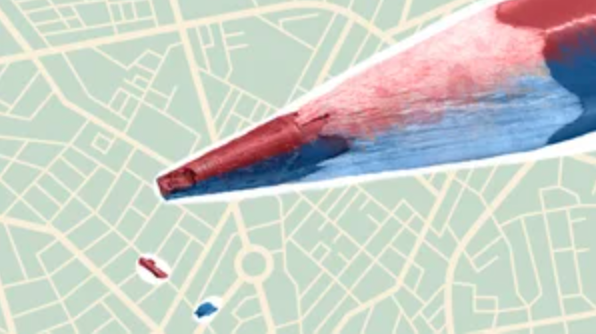
The U.S. Census Bureau has fired the starting gun on a chaotic sprint to draw new district boundary lines in what will be at once the most transparent and the most unfettered exercise in political cartography in half a century.
The bureau on Thursday released data showing the contours of America’s population, figures that show a rapidly diversifying nation that is moving south and west, out of rural areas and into booming suburban communities. Though they will formally deliver that data to state lawmakers tasked with drawing new lines next month, the public release will allow those legislators to get to work on early drafts, just months before candidate filing deadlines for the 2022 midterm elections.
This year, the process is going to be under a microscope like never before. A decade after Republicans used their control of state legislatures to give themselves a clear advantage in the battle for control of the House of Representatives, activists on both sides have awoken to the importance of the mapmakers who will wield the pens this time.
For most of modern political history, a party’s redistricting strategy has been overseen by a handful of specialists, either within party organizations or who carve out niches for themselves in their own states.
No longer. Democrats will coordinate strategy through the National Democratic Redistricting Committee, a group chaired by former Attorney General Eric Holder. Republicans will operate the National Republican Redistricting Trust, an organization whose chief fundraiser will be former Wisconsin Gov. Scott Walker (R). Both groups have raised tens of millions of dollars.
Each side will be aided by a groundswell of activists who plan their own pressure campaigns on lawmakers.
While many legislatures and independent commissions have held public hearings in the past, new technology now allows anyone with an internet connection to both draw their own maps — and, in many states, to formally submit those proposals to the legislature — and to watch live as legislators argue over boundary lines, a debate that has long taken place behind closed doors.
But those activists face an uncomfortable truth: The legislators they are trying to persuade actually have more power to draw district lines now than they did 10 years ago, after several U.S. Supreme Court decisions eroded the authority of the federal Justice Department to oversee redistricting and prevented the federal judiciary from blocking some of the most egregious uses of partisan gerrymandering.
Those decisions will allow lawmakers a far greater ability to use political information to craft districts to their liking, and it will give the minority party — Democrats in red states, Republicans in blue states — fewer avenues through which to challenge the results.
Republicans begin the redistricting process with a distinct advantage: Their control of state legislatures, a legacy of the banner 2010 midterm elections that Democrats still rue, give them the chance to redraw a little more than a third of all U.S. House district lines. Democrats control the pens in about half that number of seats. Independent commissions and divided governments control the rest of the lines.
Total control does not equate to the ability to completely shut out the other side: Republicans control the redistricting process in Alabama, but they are unlikely to be able to draw Rep. Terry Sewell (D) out of a seat.
But control can help Republicans on their path back to a majority in the House. The party can draw districts that endanger long-standing incumbents — in Tennessee, the GOP has hinted it will consider breaking up Nashville to target Rep. Jim Cooper (D) — or new seats that lock in their advantage.
The redistricting process is already an inherently political exercise, one in which both parties jockey for the slightest advantage to give themselves the best chances of winning elections for a decade to come.
There are early signs that the process is set to fray the already-tense relations between Democrats and Republicans in state capitals across the country. In Missouri, a bipartisan commission set up to draw boundaries deadlocked this week over which of their 20 members would be named chairman. Members of New Jersey’s redistricting commission have sent two candidates for its own chairman — one nominated by members of each party — to the state Supreme Court.
In Michigan, the group behind a ballot measure to create an independent redistricting panel has been sharply critical of that panel’s decision to hire lawyers who defended Republican-drawn maps last decade in Pennsylvania and North Carolina.
As legislatures and commissions convene in the coming weeks and months to consider their own plans, those tensions will only grow.
And, thanks to the live streams that will play on computers across the nation, they will be on display for all to see.
Via The Hill


